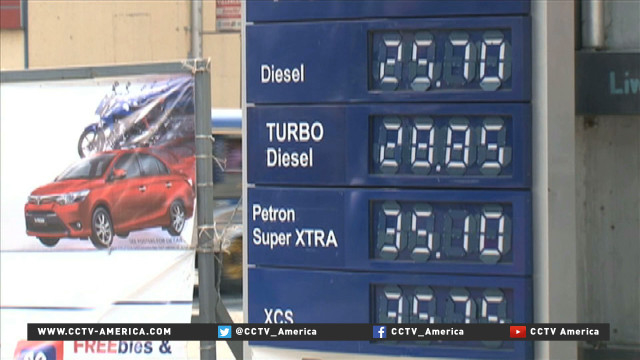The Philippine economy continues to outperform its neighbors. It expanded by almost 7 percent in the last quarter of 2014. The expansion has pushed the country’s average full-year growth to just over 6 percent, making it Asia’s second fastest-growing economy.
CCTV’s Barnaby Lo reported this story from Manila.

The Phillippine economy outperforms Asian neighbors
The Philippine economy continues to outperform its neighbors. It expanded by almost 7 percent in the last quarter of 2014. The expansion has pushed the country's average full-year growth to just over 6 percent, making it Asia's second fastest-growing economy. CCTV's Barnaby Lo reported this story from Manila.Still reeling from the aftermath of natural disasters, the $300 billion Philippine economy slowed in 2014, but still outpaced most other Asian countries.
“Growth figures… beat international expectations — nearly 7 percent in the last quarter of 2014 — pushing the average full-year growth to more than 6 percent for a third consecutive year,” Economic Planning Secretary Arsenio Balisacan said.
Congestion at Manila’s ports and the lingering effects of Typhoon Haiyan, one of the most destructive storms to hit the country, had dampened its economic performance for a good part of 2014.
An increase in agricultural output, the continuing expansion of the call center industry, construction in both public and private sectors, and strong consumer demand boosted the economy.
Balisacan said the Philippines has avoided a boom-bust cycle — and at least one international lender agrees.
“The current growth of the Philippines is not driven purely by debt. It’s driven by strong fundamentals and a good demographics, and improved productivity. So you would think that it does seem like the issues of the past of boom-bust cycles and the leverage-driven growth is no longer the case,” Shanaka Jayanath Peiris of International Money Fund said.
As an oil-importing country, the Philippines stands to benefit from low oil prices, which would equal cheaper commodities and power rates. But in a country that is home to one of Asia’s youngest and fastest growing populations, economists believe continuing economic growth, over the long term, will depend on the country’s ability to take advantage of its young society.
“That young population provides a big opportunity to grow faster and create jobs. Of course it provides the opportunity to have higher GDP growth,” Peiris said. “But you also need to create the jobs, so you won’t have the unemployment problem. So it’s a great opportunity but it’s also a challenge.”
The unemployment rate in the Philippines remains one of the highest in Asia, but a million jobs were also created in 2014.
 CGTN America
CGTN America
